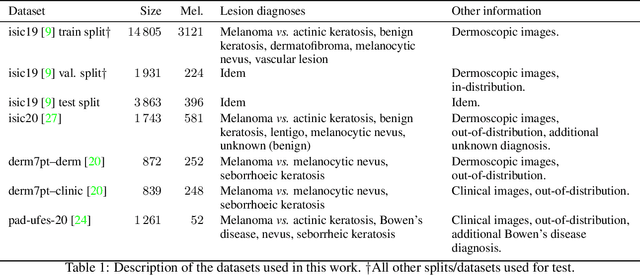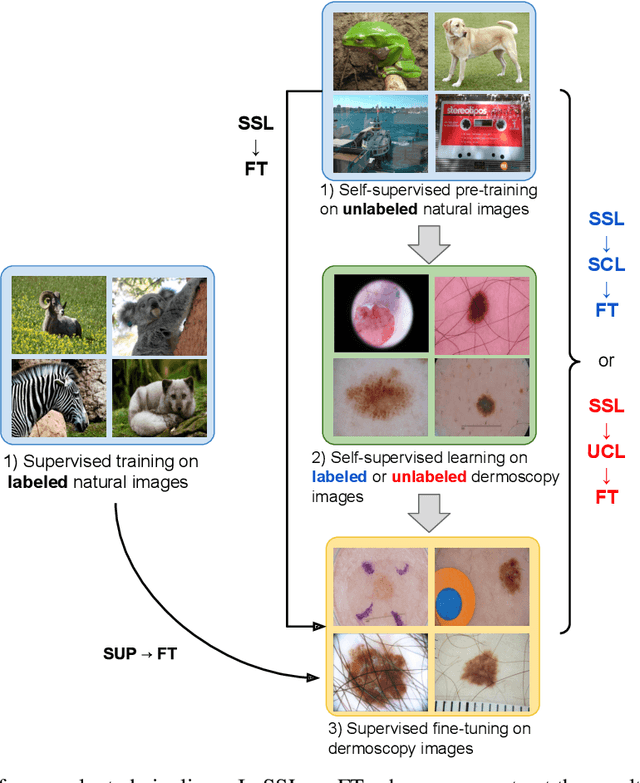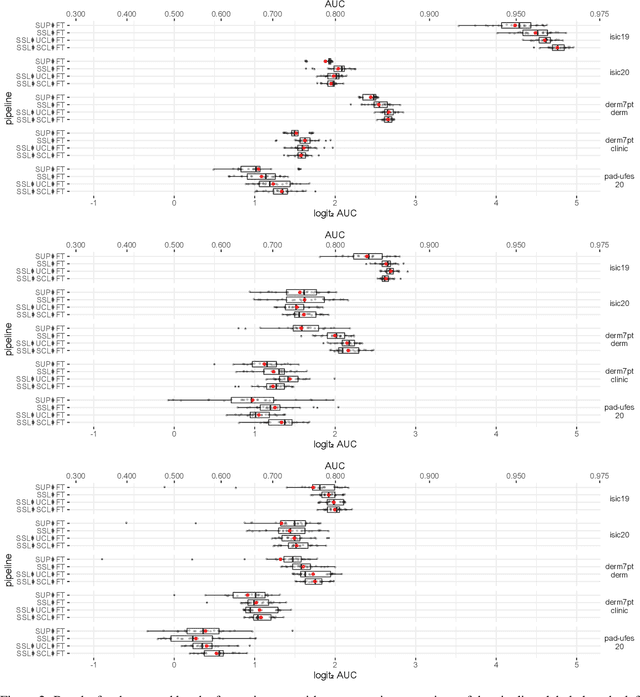An Evaluation of Self-Supervised Pre-Training for Skin-Lesion Analysis
Paper and Code
Jun 27, 2021



Self-supervised pre-training appears as an advantageous alternative to supervised pre-trained for transfer learning. By synthesizing annotations on pretext tasks, self-supervision allows to pre-train models on large amounts of pseudo-labels before fine-tuning them on the target task. In this work, we assess self-supervision for the diagnosis of skin lesions, comparing three self-supervised pipelines to a challenging supervised baseline, on five test datasets comprising in- and out-of-distribution samples. Our results show that self-supervision is competitive both in improving accuracies and in reducing the variability of outcomes. Self-supervision proves particularly useful for low training data scenarios ($<1\,500$ and $<150$ samples), where its ability to stabilize the outcomes is essential to provide sound results.
 Add to Chrome
Add to Chrome Add to Firefox
Add to Firefox Add to Edge
Add to Edge